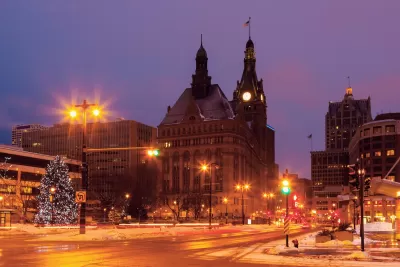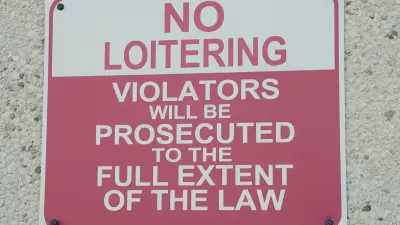Bucking national trends, Milwaukee reduced homelessness in 2024 through Housing First policies and supportive services, but local advocates warn high housing costs will likely lead to an increase in the unhoused population in the coming year.

While homelessness rose sharply at the national level in 2024, Milwaukee County saw a decrease in the number of unhoused residents, reports Anna Marie Yanny for Wisconsin Public Radio.
In the 2024 point-in-time count, conducted every year in January, Milwaukee County counted 885 unhoused people, compared to 1,056 in 2023. This is a 16 percent decrease, a stark contrast to the 18 percent nationwide increase. The number of homeless people rose in other Wisconsin cities and counties, Yanny notes.
What makes Milwaukee different? According to Milwaukee County Executive David Crowley, the county’s Housing First approach, coupled with wraparound services, has shown “encouraging results.” The county is also actively working with landlords to encourage them to rent to people who have been homeless through the 2024 “Landlord Incentives to Foster Tenancy” program.
However, local officials are warning that rising rents will likely lead to an increase in homelessness in the next count, scheduled for late January. “Milwaukee area organizers said they need more affordable housing, local investors and a slowed pace of rent increase.”
FULL STORY: Milwaukee resists national homelessness trend

Trump Administration Could Effectively End Housing Voucher Program
Federal officials are eyeing major cuts to the Section 8 program that helps millions of low-income households pay rent.

Planetizen Federal Action Tracker
A weekly monitor of how Trump’s orders and actions are impacting planners and planning in America.

The 120 Year Old Tiny Home Villages That Sheltered San Francisco’s Earthquake Refugees
More than a century ago, San Francisco mobilized to house thousands of residents displaced by the 1906 earthquake. Could their strategy offer a model for the present?

HSR Reaches Key Settlement in Northern California City
The state’s high-speed rail authority reached an agreement with Millbrae, a key city on the train’s proposed route to San Francisco.

Washington State Legislature Passes Parking Reform Bill
A bill that would limit parking requirements for new developments is headed to the governor’s desk.

Missouri Law Would Ban Protections for Housing Voucher Users
A state law seeks to overturn source-of-income discrimination bans passed by several Missouri cities.
Urban Design for Planners 1: Software Tools
This six-course series explores essential urban design concepts using open source software and equips planners with the tools they need to participate fully in the urban design process.
Planning for Universal Design
Learn the tools for implementing Universal Design in planning regulations.
Ada County Highway District
Clanton & Associates, Inc.
Jessamine County Fiscal Court
Institute for Housing and Urban Development Studies (IHS)
City of Grandview
Harvard GSD Executive Education
Toledo-Lucas County Plan Commissions
Salt Lake City
NYU Wagner Graduate School of Public Service





























